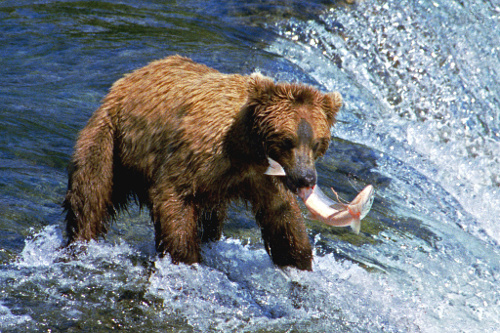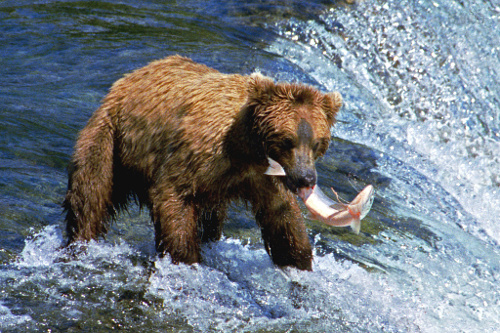BY HANNES THUM
 It’s long been part of human nature to use stories to develop knowledge (by talking about something in the world), to use stories to transport knowledge (by making the stories memorable, and thus repeatable from person to person), and to use stories to teach knowledge (by passing on the stories to new listeners).
It’s long been part of human nature to use stories to develop knowledge (by talking about something in the world), to use stories to transport knowledge (by making the stories memorable, and thus repeatable from person to person), and to use stories to teach knowledge (by passing on the stories to new listeners).
Here are a few stories that have stuck with me as of late and that feel pertinent to what I see out the window (snow) as I write this.
Firstly, there’s the story of Holly the Bear. Holly is one of the many brown bears that: a) inhabit Katmai National Park in Alaska; and b) were part of a recent NCAA-style tournament bracket dreamt up by Park Service employees to determine the “fattest bear.” Katmai is full of these world-famous bears, gorging themselves annually (mostly on salmon) throughout the late summer in order to gain as much weight as possible before winter, and the contest organizers asked for online votes for the photo of the fattest bear, celebrating the fact that when it comes to surviving the harsh Alaska winter, the fattest bear takes the cake.
Secondly, there’s the story of the birds in the storm. Last week, I found myself high up in the Salmon River headwaters when a snowstorm arrived. Huddled under a tree, I had plenty of time to ponder just how cold winter can be. There I was, a grown adult human with all of the tools of our human nature at my disposal, feeling fearful to consider just how quickly a warm-blooded mammal could perish in weather like that. Then, in a short break from the wind, a group of tiny chickadees chirped on past me and into the branches above my head. They had no warm clothing, no vehicle parked down the valley, no warm house back in town to drive to at the end of the weekend; instead, they were taking every minute they could to feed on as many calories as they possibly could. For chickadees in Idaho, the swiftest and craftiest eater is the one that will keep its metabolic fire alive through the coming months of cold.
Thirdly, there’s the story of how winter works. This story goes like this: the Earth, as it spins around the solar system, has a tilt to its axis. And that tilt means that sometimes the Northern Hemisphere is pointed toward the sun, and sometimes it is pointed away from the sun. Thusly, we get things like summer; things like winter, the most pressing issue in nature at this time of year; things like adaptations to winter survival.
Note that not all stories are fiction and not all stories are made up. Some of the best stories that we share were discovered, noticed, or observed. Some of the most important stories were told back and forth many times among many different people until the stories grew refined, more honed in, more accurate. And, some of the stories make science.

